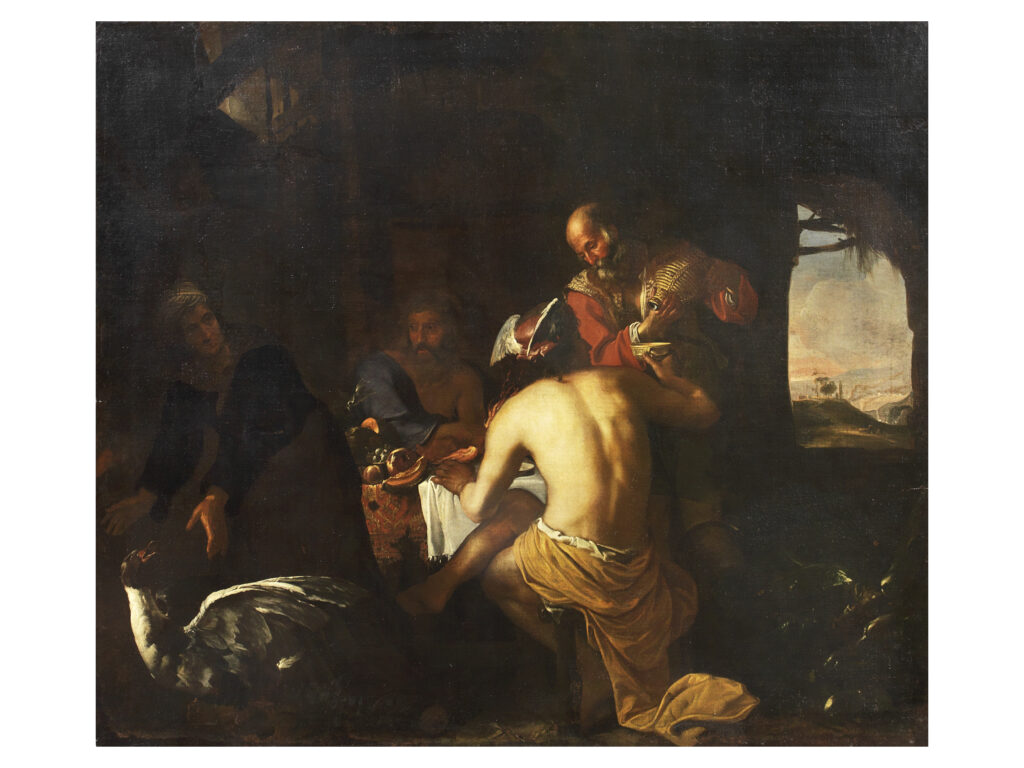ORAZIO DE FERRARI
Voltri, 1606 – Genoa, 1657
Philemon and Baucis
oil on canvas, cm 186,5×212
date: 1640 circa
This beautiful painting depicts a scene from Ovid’s Metamorphoses (VIII, 618-724), telling the story of Baucis and Philemon, a pious elderly couple from Phrygia.
Zeus and Hermes were travelling through the region disguised as poor travellers to test the goodness of humankind. “A thousand houses they approached … a thousand houses were locked and bolted. But one received them,” that is the poor cottage of Baucis and Philemon, the only ones to be saved when the gods submerged that area to punish the godlessness of humankind.
Our painting depicts the climax of the story when, shocked by the fact that “as soon as the mixing bowl was empty, it refilled itself, unaided, and the wine appeared of its own accord,” the elderly couple realise that they are in the presence of two divine guests.
The painting is certainly the work of Orazio de Ferrari and is included in Piero Donati’s monograph dedicated to the painter.
An important exponent of Genoese Baroque and a pupil of Giovanni Andrea Ansaldo, after an initial, more Mannerist period, De Ferrari veered completely towards a more naturalistic style of painting, with strong tones and a vocation for realism, thanks to the influences Gioacchino Assereto exerted on him (especially after his stay in Rome) and the effects that painters of the calibre of Vouet, Velázquez, Gentileschi, Rubens and Van Dyck had on the Ligurian city.
This turning point in his career would lead Roberto Longhi to bestow the appellation of “naturalistic baroque” on him (“Genova Pittrice,” in Paragone, XXX – 1979).
Our painting is explanatory in this regard. It is characterised by strong colour contrasts and sharp, confident brushstrokes, as can be seen, for example, in the splendid rendering of Hermes’ back “invested by a violent, spotlight-like beam of light that reverberates on the tablecloth and the yellow cloak and, rebounding off them, touches the portentous plumage of the fleeing goose,” as Donati writes, dating it to around 1651.
Pubblications:
“Orazio De Ferrari”, edited by Piero Donati, Sagep Libri, Genova, 1997, p. 109.


